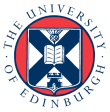LO-RISE Project: Fully Funded PDRA and PhD Studentships Available
Published: 26 June 2013
An exciting opportunity exists to join the team of LO-RISE researchers, a UK-wide research consortium into Long-lived Radionuclides in the Surface Environment.
An exciting opportunity exists to join the team of LO-RISE researchers, a UK-wide research consortium into Long-lived Radionuclides in the Surface Environment. The primary focus of this project is on defining the key physical, chemical and biological processes which govern radionuclide transport, both in the soil/sediment solution phase, and transfers to biota. We will develop a process-based understanding of the speciation of radiologically important radionuclides (particularly 14C, U/Ra), and of transport and transfer phenomena through field studies in four ‘natural laboratories’ in England and Scotland, spanning terrestrial, intertidal and marine systems, integrated with laboratory experiments, and leading to development of quantitative models of key processes. This project is led by the University of Manchester, and the consortium consists of the universities of Manchester, Loughborough, Newcastle, Cranfield, Southampton, Edinburgh together with SUERC, SAMS and the DIAMOND Light Source.
Applications are invited from qualified candidates wishing to embark on a full-time research programme commencing in Autumn 2013.
PDRA Position within LO-RISE
The PDRA will be employed by the University of Glasgow and based at SUERC but will also spend periods of time at the University of Edinburgh and the Scottish Association for Marine Science (Oban). The successful candidate will be responsible for research into the speciation, physico-chemical transport and ecological transfers of U/Ra and 14C within the near surface environment.
See page for further details.
PhD Project 1 : Long-distance transfer, speciation and food web modeling of 14C
This is a joint studentship between the Scottish Universities Environmental Research Centre (SUERC, East Kilbride) and the Scottish Association for Marine Science (SAMS, Oban). This studentship will investigate the role of particulate and dissolved organic and inorganic carbon in 14C and 129I transport from the Irish Sea to the wider oceanic environment. An integrated food web study, carried out on the NW Scotland, will analyse material such as macrofauna, plankton and fish for 14C and the data used to parameterise an Ecotracer model based on the existing Ecopath with Ecosim model of the W Coast of Scotland.
Supervisors: Professor G Cook/Dr G MacKinnon/Dr S Xu (SUERC) and Dr S Heymans/Dr J Howe (SAMS).
See page for further details.
PhD Project 2: Role of Organic Matter in Binding U/Ra and Incorporating 14C
This is a joint studentship between the School of Geosciences, University of Edinburgh and the Scottish Universities Environmental Research Centre (SUERC, East Kilbride). This studentship will involve a molecular scale characterisation of organic matter (OM) and a multiple isotopic tracer (13C/12C, 14C, actinide/ 226Ra activity ratios) approach to study U/Ra and 14C behaviour and fate in soils and saltmarsh sediments at the Needle's Eye natural analogue site, SW Scotland. This site has elevated levels of natural and anthropogenic radionuclides derived from well-characterised sources and represents an ideal natural laboratory in which to investigate U/Ra and 14C behaviour, with particular emphasis on the key characteristics of the OM components incorporating 14C and/or binding U/Ra.
Supervisors: Dr Margaret Graham/Dr. Dusan Uhrin (University of Edinburgh) and Dr Gillian MacKinnon/Professor Gordon Cook (SUERC).
See page for further details.
 |
 |
 |
First published: 26 June 2013
<< News

